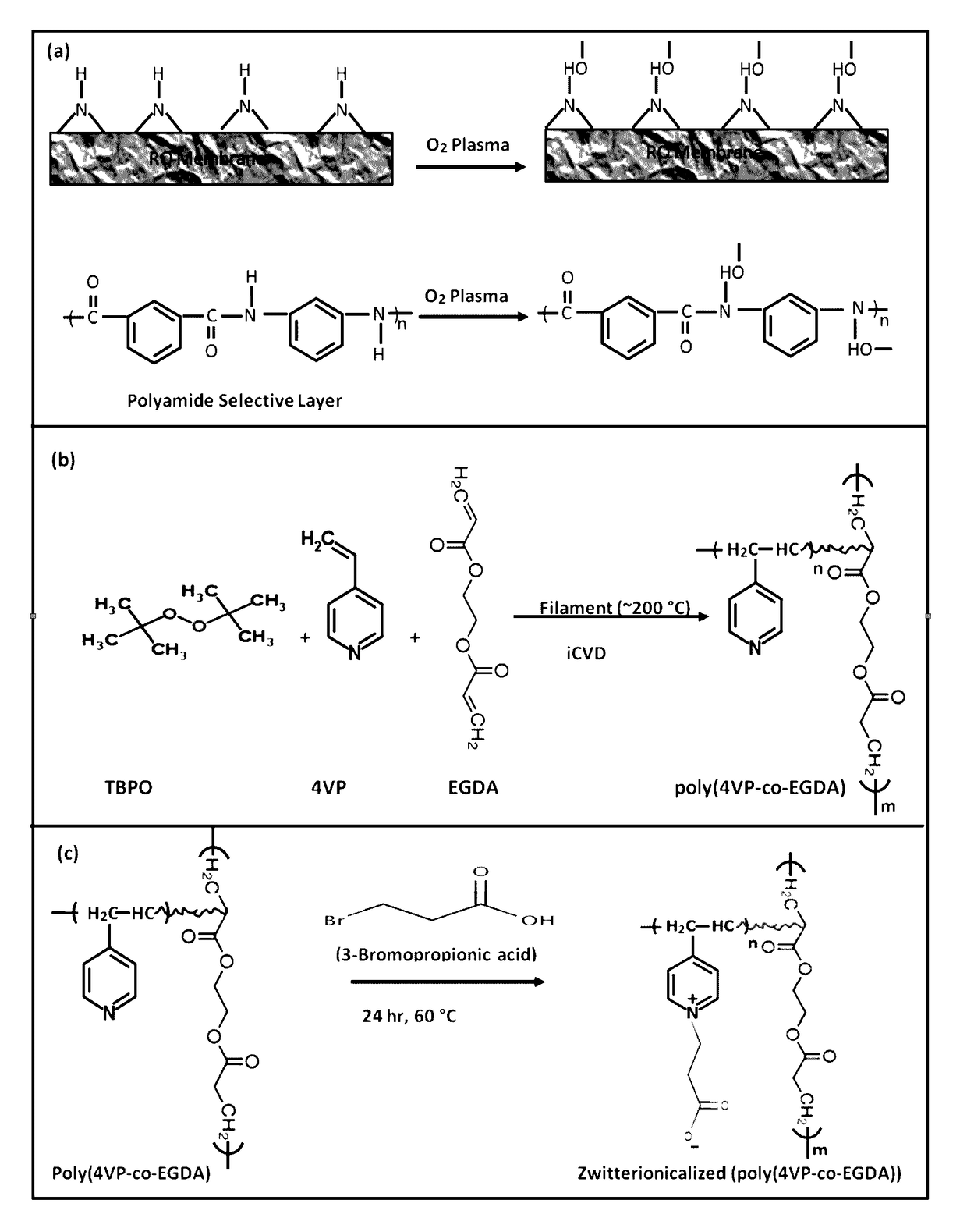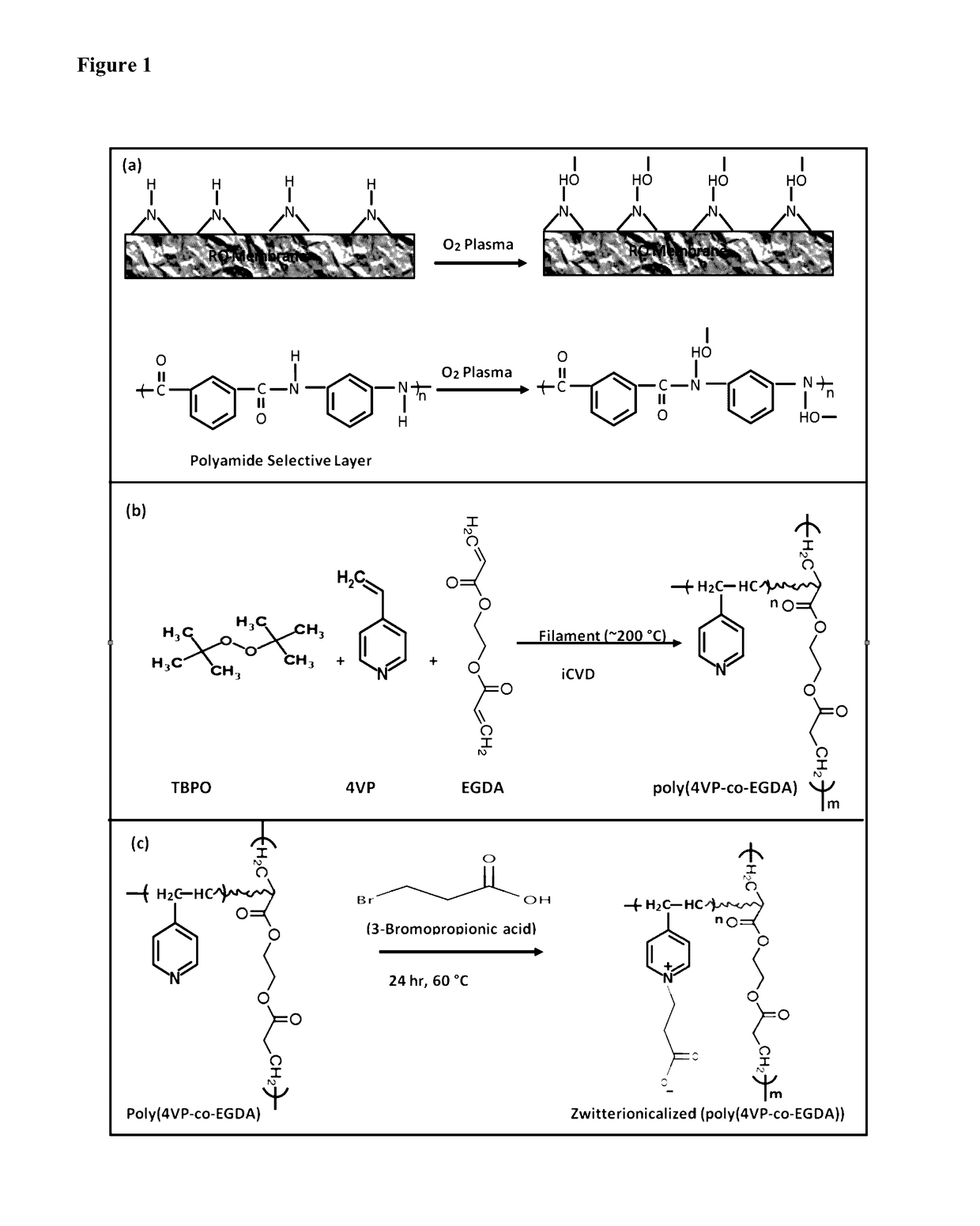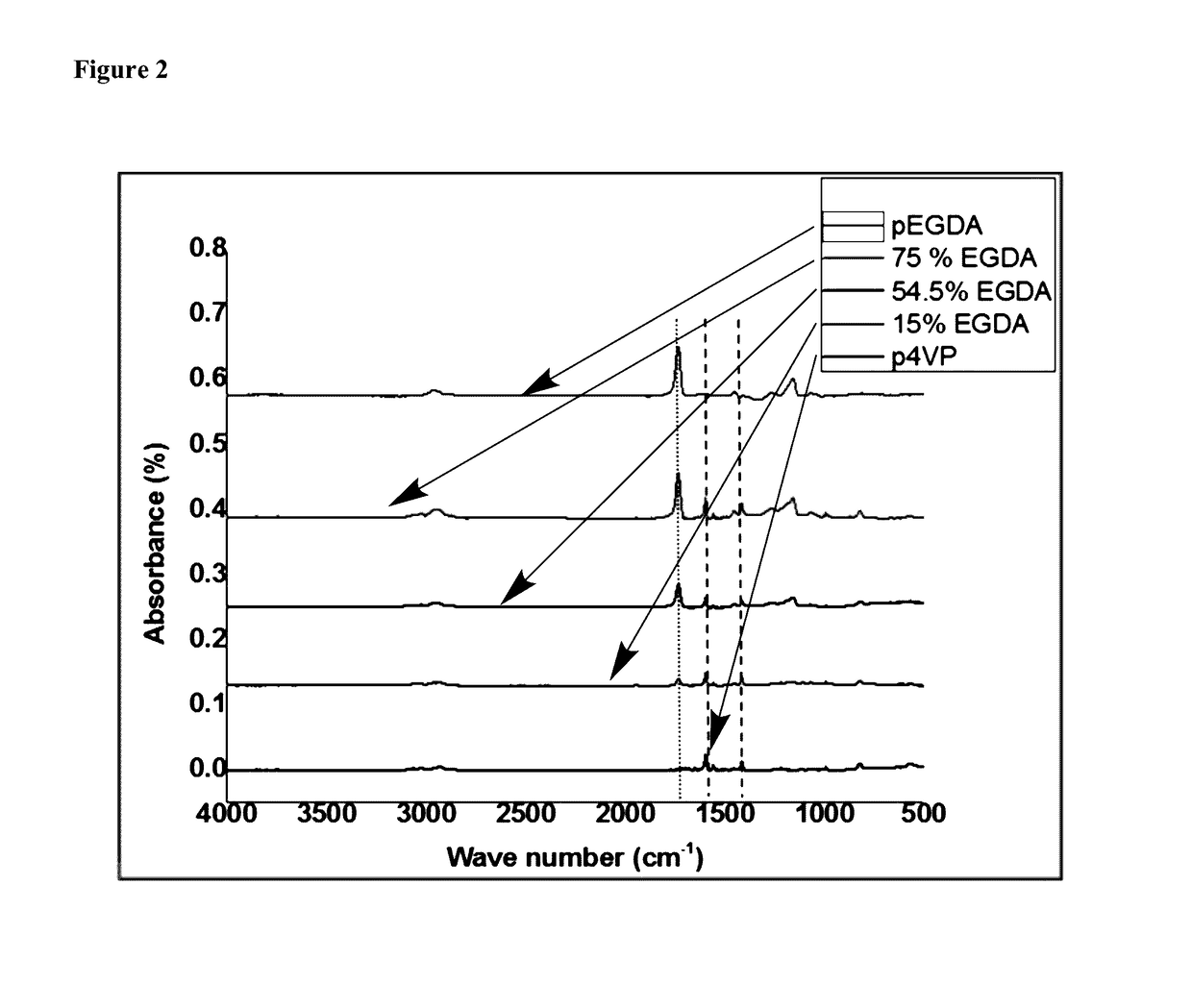Development of zwitterionic coatings that confer ultra anti-biofouling properties to commercial reverse osmosis membranes
a reverse osmosis membrane and anti-biofouling technology, applied in anti-fouling/underwater paints, pretreated surfaces, separation processes, etc., can solve the problems of affecting the separation capability of membranes, membrane fouling is a serious problem, and the device performance of submerged surfaces is reduced
- Summary
- Abstract
- Description
- Claims
- Application Information
AI Technical Summary
Benefits of technology
Problems solved by technology
Method used
Image
Examples
example 1
Synthesis of Copolymer Film and Zwitterion Formation
[0171]Materials and Methods
[0172]Different compositions of the same copolymer films p(4-VP-co-EGDA) were deposited in a custom built vacuum reactor (Sharon Vacuum) previously described (Martin, T. P. et al. Biomaterials 2007, 28, 909-915; and Ozaydin-Ince, G. et al. J. Vac. Sci. Technol., A 2009, 27, 1135-1143). The monomers (EGDA (vapor pressure 0.0939 torr at 25° C.) and 4-VP (vapor pressure 1.68 torr at 25° C.)) and initiator (TBPO) were heated in separate glass jars attached to the reactor, and vapors were fed in to the chamber to react on the heated arrays of filament (80% Ni-20% Cr, Goodfellow). Flow rates of both the monomers were systematically changed (while keeping the initiator flow rate fixed) to obtain different compositions of the copolymer.
[0173]All chemicals were used as purchased without further purification. Test grade Silicon (Si) wafers (Wafer World, Palm Beach County, Fla., USA) were coated with copolymer p(4-V...
example 2
Compositional Characterization of Deposited Copolymer Films
[0181]Materials and Methods
[0182]Nicolet Nexus 870 ESP Spectrometer (Thermo Nicolet, WI, USA) in normal transmission mode was used to obtain Fourier transform infrared (FTIR) spectra. A deuterated triglycine sulfate (DTGS) KBr detector over the range of 400-4000 cm−1 was utilized with a 4-cm−1 resolution. FTIR spectra of deposited Si wafers were measured immediately after deposition or post-treatment, and measured spectra were averaged over at least 100 scans to improve the signal-to-noise ratio. All FTIR spectra were baseline-corrected by subtracting a background spectrum of the Si wafer substrate and smoothed by averaging minimum 10 adjacent points.
[0183]X-ray photoelectron spectroscopy (XPS) survey spectrum and higher resolution spectra of N1s were obtained on a Kratos Axis Ultra Spectrometer (Surface Science Instrument, SSX-100) with a monochromatic Al Kα source. Samples were stored under vacuum overnight prior to analys...
example 3
Surface Hydrophilicity
[0188]Materials and Methods
[0189]Sessile drop contact angle was measured at ambient conditions (25° C. and 1 atm.) by utilizing goniometer equipped with an automatic dispenser (Model 500, Ramé-Hart). A 2-μL droplet of deionized water was placed on the specimen and contact angle was measured immediately after the contact. At least five measurements were performed on each specimen sufficiently apart from each other and the average was reported as the contact angle of the surface under study.
[0190]Results and Discussion
[0191]Contact angle measurement is a well-established method of measuring the hydrophilicity of a surface. Hydrophilicity is characterized by lower values of water contact angle. Lower values of contact angle are also indicative of higher wettability which helps in the formation of surface water layer. It is hypothesized that the non-fouling ability of both polyhydrophilic and polyzwitterionic materials are tightly correlated with a hydration layer ...
PUM
| Property | Measurement | Unit |
|---|---|---|
| static contact angle | aaaaa | aaaaa |
| time | aaaaa | aaaaa |
| thick | aaaaa | aaaaa |
Abstract
Description
Claims
Application Information
 Login to View More
Login to View More - R&D
- Intellectual Property
- Life Sciences
- Materials
- Tech Scout
- Unparalleled Data Quality
- Higher Quality Content
- 60% Fewer Hallucinations
Browse by: Latest US Patents, China's latest patents, Technical Efficacy Thesaurus, Application Domain, Technology Topic, Popular Technical Reports.
© 2025 PatSnap. All rights reserved.Legal|Privacy policy|Modern Slavery Act Transparency Statement|Sitemap|About US| Contact US: help@patsnap.com



